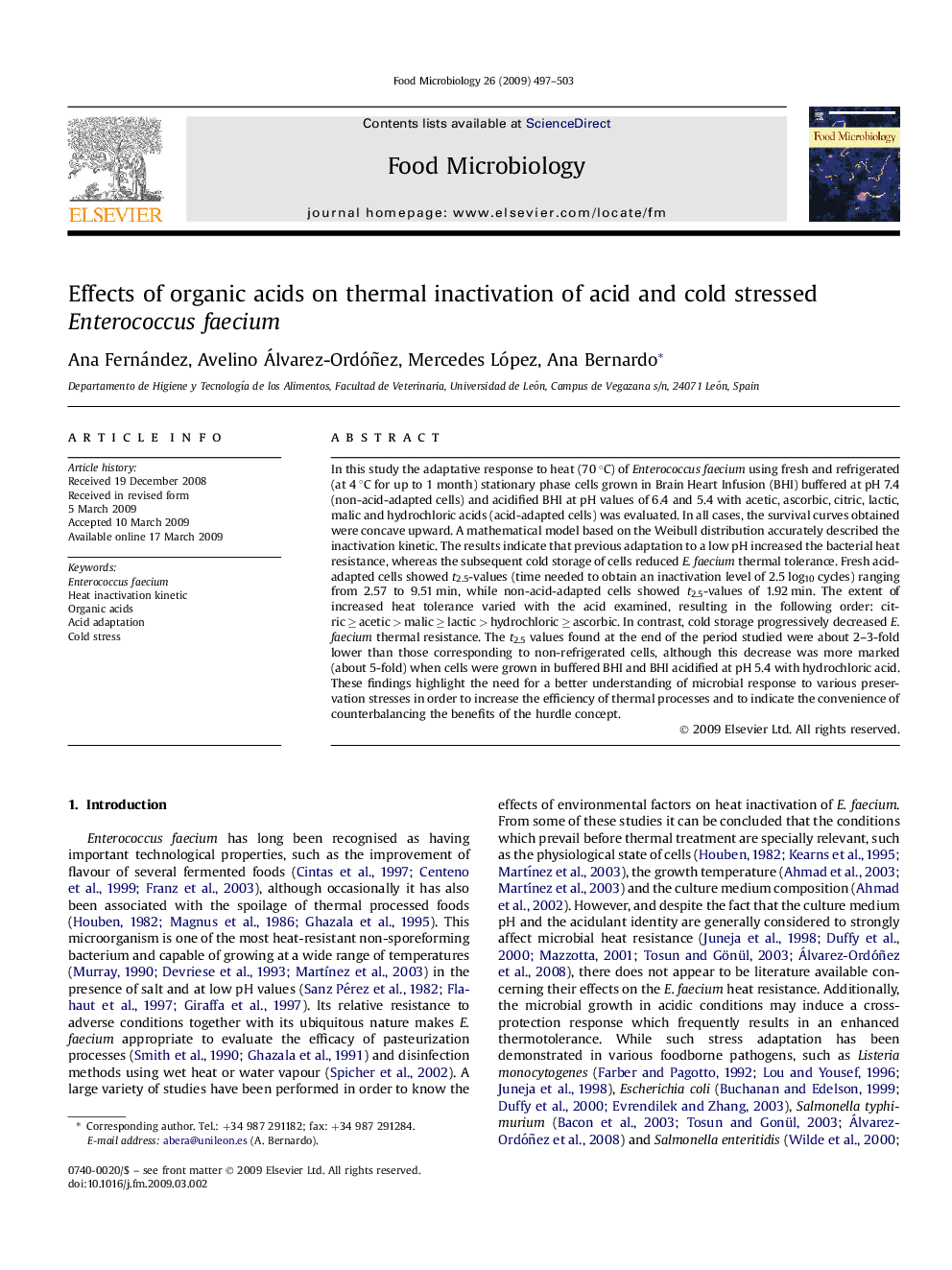| کد مقاله | کد نشریه | سال انتشار | مقاله انگلیسی | نسخه تمام متن |
|---|---|---|---|---|
| 4363407 | 1301555 | 2009 | 7 صفحه PDF | دانلود رایگان |

In this study the adaptative response to heat (70 °C) of Enterococcus faecium using fresh and refrigerated (at 4 °C for up to 1 month) stationary phase cells grown in Brain Heart Infusion (BHI) buffered at pH 7.4 (non-acid-adapted cells) and acidified BHI at pH values of 6.4 and 5.4 with acetic, ascorbic, citric, lactic, malic and hydrochloric acids (acid-adapted cells) was evaluated. In all cases, the survival curves obtained were concave upward. A mathematical model based on the Weibull distribution accurately described the inactivation kinetic. The results indicate that previous adaptation to a low pH increased the bacterial heat resistance, whereas the subsequent cold storage of cells reduced E. faecium thermal tolerance. Fresh acid-adapted cells showed t2.5-values (time needed to obtain an inactivation level of 2.5 log10 cycles) ranging from 2.57 to 9.51 min, while non-acid-adapted cells showed t2.5-values of 1.92 min. The extent of increased heat tolerance varied with the acid examined, resulting in the following order: citric ≥ acetic > malic ≥ lactic > hydrochloric ≥ ascorbic. In contrast, cold storage progressively decreased E. faecium thermal resistance. The t2.5 values found at the end of the period studied were about 2–3-fold lower than those corresponding to non-refrigerated cells, although this decrease was more marked (about 5-fold) when cells were grown in buffered BHI and BHI acidified at pH 5.4 with hydrochloric acid. These findings highlight the need for a better understanding of microbial response to various preservation stresses in order to increase the efficiency of thermal processes and to indicate the convenience of counterbalancing the benefits of the hurdle concept.
Journal: Food Microbiology - Volume 26, Issue 5, August 2009, Pages 497–503